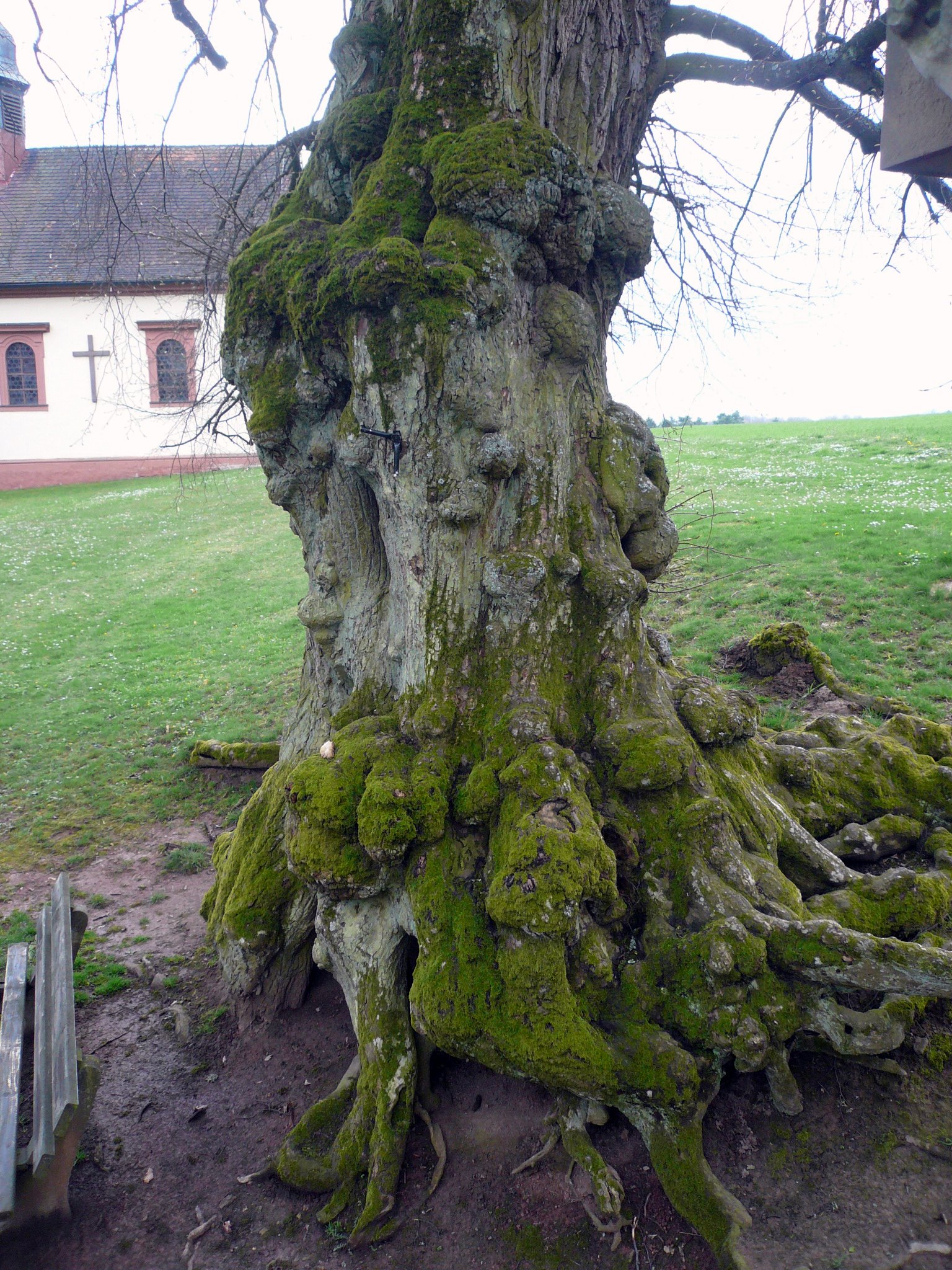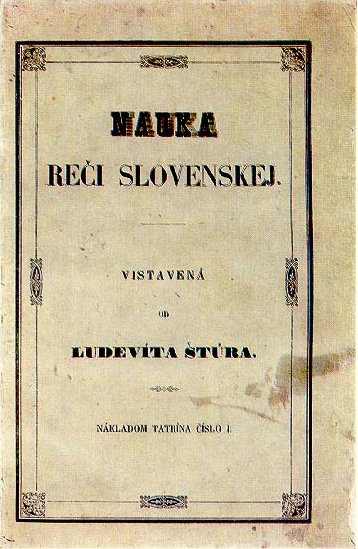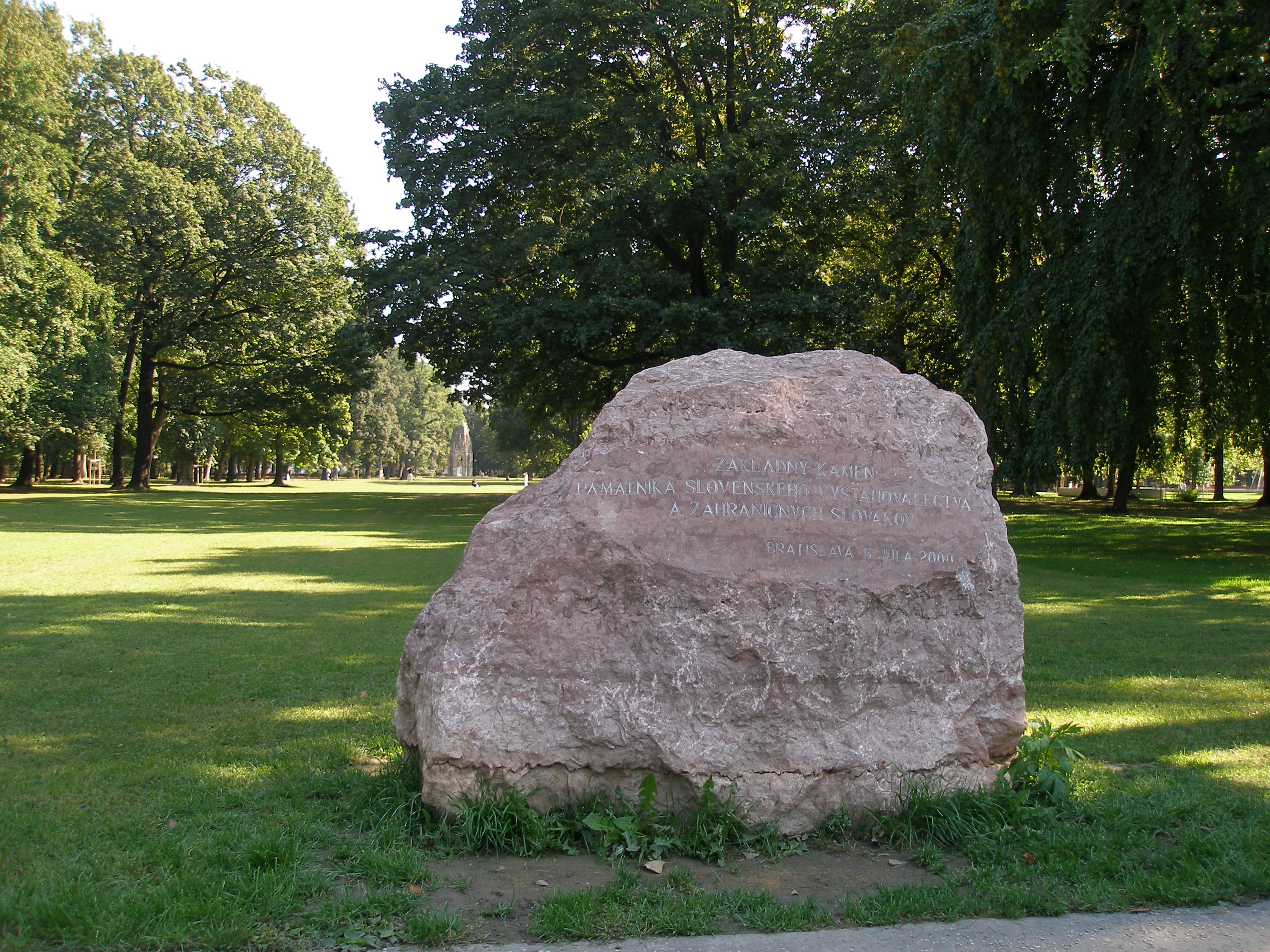|
Palisády Street
Palisády Street () is a major street in Bratislava's Old Town connecting Hodžovo námestie and Bratislava Castle in the Slovakia's capital. The street is served by public transport trolleybusses. Near the Bratislava Castle and National Council of the Slovak Republic building it bends sharply and continues as Mudroňova Street, together forming the main passageway through the western part of the Bratislava Old Town. Bratislava tree There is an old Linden tree located at Palisády Street no. 12 - 14. which survived several centuries. It is probably a survivor of one of the famous renaissance gardens that used to be in this area. There is a copperplate from A. Kaltschmied from 1735, according to a geometer Mikovíny, providing historical evidence of the widespread linden trees in the area of contemporary "Palisades". On the plan from 1768 there is a dominant tree marked in the garden of baron Jesenák, it is mentioned also by M. Korabinský in his publication on Bratislava from ... [...More Info...] [...Related Items...] OR: [Wikipedia] [Google] [Baidu] |
Tilia
''Tilia'' is a genus of about 30 species of trees or bushes, native throughout most of the temperateness, temperate Northern Hemisphere. The tree is known as linden for the European species, and basswood for North American species. In Great Britain and Ireland they are commonly called lime trees, although they are not related to the citrus Lime (fruit), lime. The genus occurs in Europe and eastern North America, but the greatest species diversity is found in Asia. Under the Cronquist system, Cronquist classification system, this genus was placed in the family Tiliaceae, but genetic research summarised by the Angiosperm Phylogeny Group has resulted in the incorporation of this genus, and of most of the previous family, into the Malvaceae. ''Tilia'' is the only known ectomycorrhizal genus in the family Malvaceae. Studies of ectomycorrhizal relations of ''Tilia'' species indicate a wide range of fungal symbionts and a preference toward Ascomycota fungal partners. Description ''T ... [...More Info...] [...Related Items...] OR: [Wikipedia] [Google] [Baidu] |
Trolleybuses
A trolleybus (also known as trolley bus, trolley coach, trackless trolley, trackless tramin the 1910s and 1920sJoyce, J.; King, J. S.; and Newman, A. G. (1986). ''British Trolleybus Systems'', pp. 9, 12. London: Ian Allan Publishing. .or trolleyDunbar, Charles S. (1967). ''Buses, Trolleys & Trams''. Paul Hamlyn Ltd. (UK). Republished 2004 with or 9780753709702.) is an electric bus that draws power from dual overhead wires (generally suspended from roadside posts) using spring-loaded or pneumatically raised trolley poles. Two wires, and two trolley poles, are required to complete the electrical circuit. This differs from a tram or streetcar, which normally uses the track as the return path, needing only one wire and one pole (or pantograph). They are also distinct from other kinds of electric buses, which usually rely on batteries. Power is most commonly supplied as 600-volt direct current in older systems and 750-volts in newer systems, but there are exceptions. Currently, ... [...More Info...] [...Related Items...] OR: [Wikipedia] [Google] [Baidu] |
Carpathian Mountains
The Carpathian Mountains or Carpathians () are a range of mountains forming an arc across Central Europe and Southeast Europe. Roughly long, it is the third-longest European mountain range after the Ural Mountains, Urals at and the Scandinavian Mountains at . The highest peaks in the Carpathians are in the Tatra Mountains, exceeding , closely followed by those in the Southern Carpathians in Romania, exceeding . The range stretches from the Western Carpathians in Austria, the Czech Republic, Slovakia and Poland, clockwise through the Eastern Carpathians in Ukraine and Romania, to the Southern Carpathians in Romania and Serbia.About the Carpathians – Carpathian Heritage Society [...More Info...] [...Related Items...] OR: [Wikipedia] [Google] [Baidu] |
Berlin
Berlin ( ; ) is the Capital of Germany, capital and largest city of Germany, by both area and List of cities in Germany by population, population. With 3.7 million inhabitants, it has the List of cities in the European Union by population within city limits, highest population within its city limits of any city in the European Union. The city is also one of the states of Germany, being the List of German states by area, third smallest state in the country by area. Berlin is surrounded by the state of Brandenburg, and Brandenburg's capital Potsdam is nearby. The urban area of Berlin has a population of over 4.6 million and is therefore the most populous urban area in Germany. The Berlin/Brandenburg Metropolitan Region, Berlin-Brandenburg capital region has around 6.2 million inhabitants and is Germany's second-largest metropolitan region after the Rhine-Ruhr region, as well as the List of EU metropolitan areas by GDP, fifth-biggest metropolitan region by GDP in the European Union. ... [...More Info...] [...Related Items...] OR: [Wikipedia] [Google] [Baidu] |
Slav
The Slavs or Slavic people are groups of people who speak Slavic languages. Slavs are geographically distributed throughout the northern parts of Eurasia; they predominantly inhabit Central Europe, Eastern Europe, Southeastern Europe, and Northern Asia, though there is a large Slavic minority scattered across the Baltic states and Central Asia, and a substantial Slavic diaspora in the Americas, Western Europe, and Northern Europe. Early Slavs lived during the Migration Period and the Early Middle Ages (approximately from the 5th to the 10th century AD), and came to control large parts of Central, Eastern, and Southeast Europe between the sixth and seventh centuries. Beginning in the 7th century, they were gradually Christianized. By the 12th century, they formed the core population of a number of medieval Christian states: East Slavs in the Kievan Rus', South Slavs in the Bulgarian Empire, the Principality of Serbia, the Duchy of Croatia and the Banate of Bosnia, and ... [...More Info...] [...Related Items...] OR: [Wikipedia] [Google] [Baidu] |
Ľudovít Štúr
Ľudovít Štúr (; 28 October 1815 – 12 January 1856), also known as Ľudovít Velislav Štúr, was a Slovak revolutionary, politician, and writer. As a leader of the Slovak nationalism, Slovak national revival in the 19th century and the codifier of Standard language, standard Slovak language, Slovak, he is lauded as one of the most important figures in Slovak history. Štúr was an Community organizing, organizer of the Slovaks, Slovak volunteer Political campaign, campaigns during the Hungarian Revolution of 1848. He was also a politician, Slovak poetry, poet, journalist, publisher, teacher, philosopher, linguist, and member of the Hungarian Parliament. Biography Early life Ľudovít Štúr was born on 28 October 1815 in Uhrovec, Zayugróc, in the Austrian Empire (in the same house where Alexander Dubček was later born) as the second child of Samuel and Anna Štúr. He was baptized in the Evangelical Lutheran church in Uhrovec. He acquired his basic education, inc ... [...More Info...] [...Related Items...] OR: [Wikipedia] [Google] [Baidu] |
Parks And Gardens In Bratislava
The parks and gardens in Bratislava have formed a part of the landscape of the capital of Slovakia since the Middle Ages. Some of the historical gardens of Bratislava had such architecture, architectonic value that they were widely known outside of the city and well beyond the borders of the Kingdom of Hungary. Perhaps the best known garden in the History of Bratislava, city's history was the renaissance Pálffy Garden, with its famous landmark, a centuries-old Tilia, linden tree encased in a wooden terrace frame, seven floors in height. Today, Bratislava's most famous park is Sad Janka Kráľa, established in 1774-1776 it is the oldest public park in Central Europe. There are over 20 different caretakers of parks in Bratislava and all of the parks and gardens in the city lack long-term and consistent care. The level of park maintenance is low and the parks often lack functioning pathways, benches and lightning. Gothic gardens There is basically no textual or pictorial eviden ... [...More Info...] [...Related Items...] OR: [Wikipedia] [Google] [Baidu] |
National Council Of The Slovak Republic
The National Council of the Slovak Republic (, abbreviated to ''NR SR'') is the national parliament of Slovakia. It is unicameralism, unicameral and consists of 150 members, who are elected by universal suffrage under proportional representation with seats distributed via largest remainder method with Hagenbach-Bischoff quota every four years. Slovakia's parliament has been called the 'National Council' since 1 October 1992. From 1969 to 1992, its predecessor, the parliament of the Slovak part of Czechoslovakia, was called the Slovak National Council (). The National Council approves domestic legislation, constitutional laws, and the annual budget. Its consent is required to ratify international treaties, and is responsible for approving military operations. It also elects individuals to some positions in the executive and judiciary, as specified by law. The parliament building is in Bratislava, Slovakia's capital, next to Bratislava Castle in Alexander Dubček Square. Functio ... [...More Info...] [...Related Items...] OR: [Wikipedia] [Google] [Baidu] |
Street
A street is a public thoroughfare in a city, town or village, typically lined with Building, buildings on one or both sides. Streets often include pavements (sidewalks), pedestrian crossings, and sometimes amenities like Street light, streetlights or Bench (furniture), benches. A street can be as simple as a level patch of Dirt road, dirt, but is more often pavement (material), paved with a hard, durable surface such as Tarmacadam, tarmac, concrete, cobblestone or brick. It can be designed for both social activity and movement. Originally, the word ''street'' simply meant a paved road (). The word ''street'' is still sometimes used informally as a synonym for ''road'', for example in connection with the ancient Watling Street, but city residents and urban planning, urban planners draw a significant modern distinction: a road's main function is transportation, while streets facilitate public interaction. [...More Info...] [...Related Items...] OR: [Wikipedia] [Google] [Baidu] |
Trolleybus
A trolleybus (also known as trolley bus, trolley coach, trackless trolley, trackless tramin the 1910s and 1920sJoyce, J.; King, J. S.; and Newman, A. G. (1986). ''British Trolleybus Systems'', pp. 9, 12. London: Ian Allan Publishing. .or trolleyDunbar, Charles S. (1967). ''Buses, Trolleys & Trams''. Paul Hamlyn Ltd. (UK). Republished 2004 with or 9780753709702.) is an electric bus that draws power from dual overhead wires (generally suspended from roadside posts) using spring-loaded or pneumatically raised trolley poles. Overhead line#Parallel overhead lines, Two wires, and two trolley poles, are required to complete the electrical circuit. This differs from a tram or streetcar, which normally uses the track as the return path, needing only one wire and one pole (or pantograph (transport), pantograph). They are also distinct from other kinds of Battery electric bus, electric buses, which usually rely on Automotive battery, batteries. Power is most commonly supplied as 600-volt ... [...More Info...] [...Related Items...] OR: [Wikipedia] [Google] [Baidu] |
Slovakia
Slovakia, officially the Slovak Republic, is a landlocked country in Central Europe. It is bordered by Poland to the north, Ukraine to the east, Hungary to the south, Austria to the west, and the Czech Republic to the northwest. Slovakia's mostly mountainous territory spans about , hosting a population exceeding 5.4 million. The capital and largest city is Bratislava, while the second largest city is Košice. The Slavs arrived in the territory of the present-day Slovakia in the 5th and 6th centuries. From the late 6th century, parts of modern Slovakia were incorporated into the Pannonian Avars, Avar Khaghanate. In the 7th century, the Slavs played a significant role in the creation of Samo's Empire. When the Avar Khaghanate dissolved in the 9th century, the Slavs established the Principality of Nitra before it was annexed by the Great Moravia, Principality of Moravia, which later became Great Moravia. When Great Moravia fell in the 10th century, the territory was integrated i ... [...More Info...] [...Related Items...] OR: [Wikipedia] [Google] [Baidu] |








